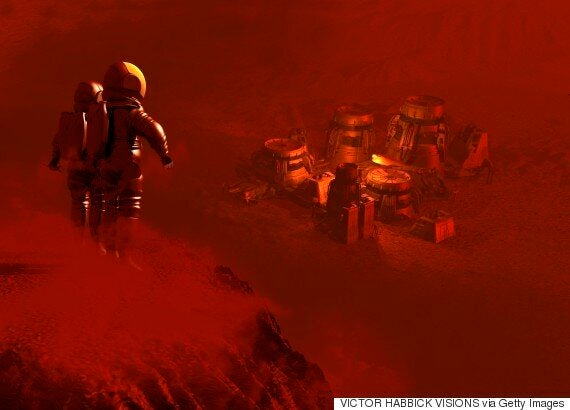You think Mars is red:

And it is, in a rusty sort of way:
But give it a wipe (or drill into the surface with the $2.5 billion rover pictured above) and it's actually blue:
Or maybe grey?
This is actually what's left behind when you have the Curiosity rover drill into the Martian surface.
The latest drilling experiment took place at a location known as “Telegraph Point”, an area of bedrock which Nasa says “forms the basal layer of Mouth Sharp”.
NASA said that the rocks drilled on 24 February are high in silicon, compared to aluminium and magnesium.
"When you graph the ratios of silica to magnesium and silica to aluminum, 'Telegraph Peak' is toward the end of the range we've seen," said Curiosity co-investigator Doug Ming. "It's what you would expect if there has been some acidic leaching. We want to see what minerals are present where we found this chemistry."
The reason that rocks on the surface of Mars are red is because the dusty top layer literally rusts — iron in the ’soil’ is oxidised in the Martian atmosphere and turns red. But underneath it’s pretty much grey.